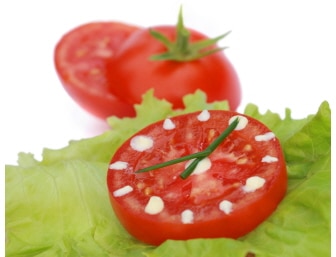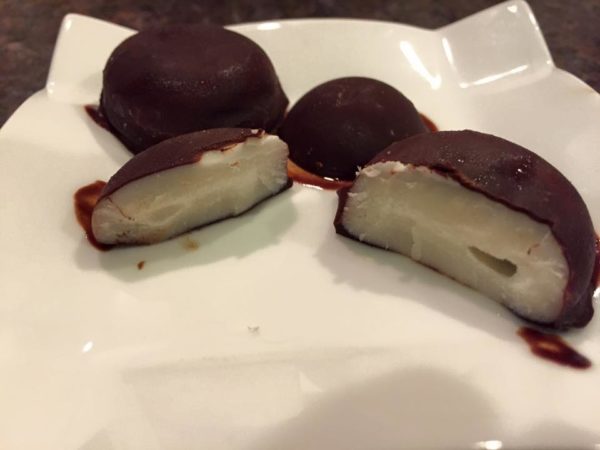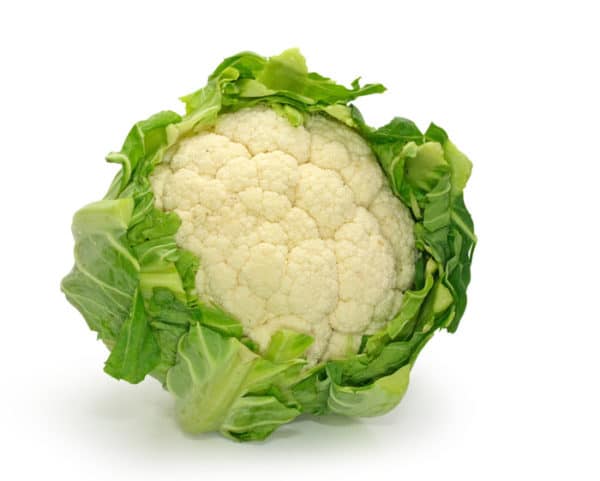
By Dr. Ritamarie Loscalzo
A common recommendation for people suffering with blood sugar imbalances and attempting to reduce weight is to eat frequent, small meals throughout the day.
The idea is that eating every couple of hours keeps your blood sugar levels steady without the dips (and severe hunger that accompanies those dips). In theory, you’ll eat less if you never let yourself get hungry enough to overeat.
Recent hormone research tells us that this is actually the worst way to eat for blood sugar balance and weight loss and can actually be damaging to your health.
Understanding Why Frequent Eating is Faulty Advice
Hunger, satiation, and blood sugar balance are all under hormonal control. And we’re not talking about reproductive hormones like estrogen and progesterone. We’re talking about what I refer to as “the survival hormones.”
Eating between means alters powerful hormonal signals, interferes with the mechanism that burns fat as fuel, clogs liver metabolism, and sends calories right to fat stores.
Insulin is a hormone secreted by your pancreas in response to eating. It doesn’t much matter what you eat; insulin will be secreted. The composition of your meal determines just how much insulin is secreted. The more carbohydrates in the meal, the more insulin that’s required to keep your blood sugar regulated.
The most basic concept that you need to understand is that whenever insulin levels rise, fat burning stops.
The Hormone Relationship Between Insulin and Fat Burning
In order to understand why an increase in insulin levels affects your fat burning ability, let’s start by understanding what should happen with hormones in a perfectly balanced body.
- You eat, insulin levels rise, and glucose is moved into your cells to be burned for energy.
- Insulin triggers leptin levels to rise (leptin is the hormone your fat cells secrete after a meal) which signals the brain to turn off your appetite and tells your pancreas to stop making insulin.
- Glucose levels return to normal, insulin decreases, and leptin triggers fat burning.
If your blood sugar begins to drop too much, glucagon is secreted to mobilize stored calories and all is well, until your next meal.
Typically, insulin levels peak at around 30 minutes after you eat and return to normal at about 3 hours. Then leptin gets to go to work and triggers fat burning.
In the ideal situation, insulin sends 60% of the fuel in a meal to the liver for “quick access” storage as glycogen and triggers the uptake of the remaining 40% of the glucose and amino acids into muscle cells and cells of your vital organs, which use the glucose for fuel and the amino acids for growth and repair.
However, if you’re eating every 2 – 3 hours, as some experts advise, your insulin levels never go back to normal and you never go into fat burning mode.
Understanding the Process of Becoming Insulin Resistant
When you eat frequent, small meals throughout the day, insulin levels stay elevated all day, triggering fat storage and leading to insulin resistance. What this means is that your cells no longer hear the cry of insulin to allow fuel in for energy. As result, more fat storage occurs and you feel tired all the time.
If everything is functioning properly, then after a meal there is no need to eat again for 5 or 6 hours.
The hormone glucagon is in charge of keeping your blood sugar steady between meals. Glucagon signals the liver to turn the stored glycogen back into glucose as your sugar levels begin to drop between meals. It also triggers a process called “gluconeogenesis” which triggers the creation of glucose from stored protein and fat.
In a healthy person, insulin and glucagon are good siblings and take turns.
There’s enough carbohydrates stored in the liver in the form of glycogen to last 24 hours, unless you are engaging in extreme exercise like marathons or triathlons, so when things are functioning well, there are no blood sugar dips between meals.
Snacking between meals causes insulin to rise again, even before it’s returned to normal, suppresses glucagon, and raises leptin levels unnaturally, leading to a condition called leptin resistance wherein the brain and pancreas no longer hear the signal from leptin to turn off appetite and reduce insulin secretion.
Constantly elevated levels of insulin, either from snacking between meals, deliberately planning meals close together, or eating foods high in sugar and simple carbohydrates, causes hyperinsulinemia, a condition of too much insulin in your blood. This condition leads to insulin resistance as the cells can no longer take in so much sugar and “close their ears” to the insulin signal.
Insulin resistance leads to weight gain, especially around the middle, stiffening of your arteries, elevated blood pressure, systemic inflammation, and eventually to cardiovascular disease like heart attack and stroke.
The Dangers of Insulin Resistance
Once you understand how the hormones are supposed to work together, you can understand why eating frequent small meals is not just a bad idea for weight loss, it’s outright dangerous.
In addition, eating too frequently can cause your liver to get congested. Remember, ideally, the liver takes 60% of the fuel from each meal and stores it as readily available fuel. When the liver becomes insulin resistant, those calories eaten head directly for fat storage as your liver can no longer accept them without the aid of insulin. Further, eating too often clogs your liver’s fuel storage system, resulting in fatigue and impaired detoxification mechanisms.
Eating too often also triggers your liver to produce excess VLDL, the most dangerous form of cholesterol. As a result, snacking between meals causes cholesterol to rise even more than eating cholesterol rich foods.
A Chain of Collapse
This whole process, a guaranteed “chain that makes you gain,” becomes a vicious, vitality-sabotaging cycle:
- When your liver gets clogged and develops insulin resistance, it’s hard to go 5-6 hours between meals or to sleep through the night because your liver can no longer produce a steady stream of glucose – it needs to comes from outside.
- When there is insulin resistance in your liver, your liver turns calories into fat at an increased rate, leading to excess weight.
The constant high levels of insulin due to eating too frequently result in excess leptin and eventually leptin resistance, which further confuses your liver and turns down the production of glucagon, the hormone that keeps your blood sugar steady between meals by stimulating the release of stored fuel.
- To make matters even worse, the lining of your blood vessels and your nerve cells do not become insulin resistant and are subject to the stiffening effect of excess blood sugar and insulin.
- The net result is stiffening of your arteries and hardening of your nerves, leading to cardiovascular disease and mental decline.
Breaking the “Gain Chain”: Solutions to Restore Your Hormones
So, now that you understand the dangers of eating frequent, small meals and how they affect your hormone balance, what’s the solution?
Timing your meals to optimize hormones is key.
It’s important to remember that fat burning is impossible when insulin levels are elevated. It takes about 3 hours after a meal for insulin levels to return to baseline, even if you just eat a small snack.
Until then, fat burning is impossible.
If you have weight to drop, are fatigued, concerned about family history of heart disease, cancer or diabetes, make use of that critical fat burning time.
At 3 hours after a meal, do some exercise, drink some water with lemon juice and do whatever it takes to hold off the next meal for as long as you comfortably can.
It may only be 3 hours and 15 minutes to start, then 3 hours and 30 minutes, and then eventually, in 15 – 30 minute increments, you’ll be able to gradually move your meal spacing to at least 5 – 6 hours.
As you stretch the time between meals and change the foods you eat to foods that require less insulin, you’ll see the pounds melt away, your energy rise and your mental clarity improve. And maybe, even more importantly, you’ll protect yourself from the top 3 killer diseases in our modern world.
To find out more, register now for the free teleseminar recording, Dr. Ritamarie’s “Hush Hush” List of Hormones and Strategies for Busting Your Holiday Bulge.
Share this:

Are you feeling stuck?
Do you feel as if something is missing from your practice that's keeping you from delivering breakthrough outcomes for your clients?.
Recent Posts
Our Programs
Nutritional Endocrinology Practitioner Training (NEPT)
The Mastery and Certification tier is our flagship program and provides everything you need to feel confident as a practitioner who knows how to get results that lead to healthy and happy clients.
Functional Assessment Mastery
Explore the relationships between the most important hormones and their relationship with nutrition.
Functional Nutrition Mastery
Learn how to support your clients to eat and supplement in a way that reduces and eliminates chronic symptoms.
Medical Disclaimer: The information on this website is not intended to replace a one-on-one relationship with a qualified health care professional and is not intended as medical advice. It is intended as a sharing of knowledge and information from the research and experience of Dr. Ritamarie Loscalzo, drritamarie.com, and the experts who have contributed. We encourage you to make your own health care decisions based upon your research and in partnership with a qualified health care professional.
Disclosure: Sometimes (but not always), when I share resources in my programs, newsletter, and on my website, I'm using an affiliate link, which means I do make money if you buy. My credibility is extremely important to me; therefore, I only endorse the products, services, and people I believe in. DrRitamarie.com is independently owned and the opinions expressed here are my own.
Click here to see our Privacy Policy.











[…] Why Eating Frequent, Small Meals May be Damaging to Your Health […]
Is the appreciation journal over?
Hi Leila! Today is the official last day of the “daily” journals, but Ritamarie definitely intends to post journals every now and then! p.s. There’s a special message for you in today’s final entry. 🙂
Great article, thank you. Is the author Stacey or Dr. Ritamarie? Confused about the 2 conflicting bylines.
Hi Suzy! Sorry! That was an admin posting error on my part. Ritamarie sometimes asks me to publish her articles for her and there was a setting I missed to make sure it was published under her name and not mine. The article is Dr. Ritamarie’s. Thanks for catching the issue. Cheers!
Wow this is very interesting. I don’t have a weight problem but I noticed that my BP is higher when I am eating frequent meals (like I have always been told to do for weight maintenance). I thought when I did my weekly house cleaning (which takes hours so I am eating less) that the reason my BP was lower was due to so much moving around. That may be partly so but now I am thinking because I eat less and meals are far apart as it takes me all day to deep clean (yes I am OCD on cleaning lol)
[…] and blog post, I wrote an article about the dangers of eating frequent small meals. You can read it here. Most people believe they need to eat frequently to avoid hypoglycemia. In fact, eating small, […]
You should appear on Dr Oz.
He did have a little sgement about Leptin yesterday but as far as eating goes, said to stop eating at 8 PM and go 12 hours without food. He said nothong about snacking. His main concern seemed to be about cravings.
I know 3 meals a day/no snacks works. I have done it for years and maintain my weight at under 105 pounds which is good for me at 5’2′ with a small frame.
7am -1pm -7 pm my 7-1-7 approach to meals 2x 6 hrs interval + 1x 12 hr gap
This is awesome information. I was doing some other research which let me to the same conclusion, and when I saw your article I shared it with my friends because it was the most reader-friendly.
I’m curious, though: would you please explain how calorie balance fits into the equation?
Hi Moses,
We’re glad you enjoyed the article! While Dr. Ritamarie’s schedule does not allow unique replies to blog posts, you can interact with her by becoming a member of the VITAL Community where she hosts a monthly Q&A call. You can become a monthly member here: http://www.VITALHealthCommunity.com
~ Stacey Terry
Vibrant Living Care Team
Thanks for the great article, goes along with natural common sens of things and purpose.
[…] found this great blog post that explains the most important reasons why eating all day long is […]
Thank you Dr. RM!
That was such a great overview of how it works and the benefits of longer times between meals.
I am starting to feel my body’s inner knowing of that…winning out over years of habit and belief that I had to have that late night snack in order to get to sleep. It is not so much having to control myself as keep leaning into the natural way and let it develop.
Thanks for the pioneering!!
Summer
Where are your sources? Aubrey
Hi Aubrey, Our sources are listed in our Insulin Resistance Practitioner Training course materials. Cheers, Marcia.